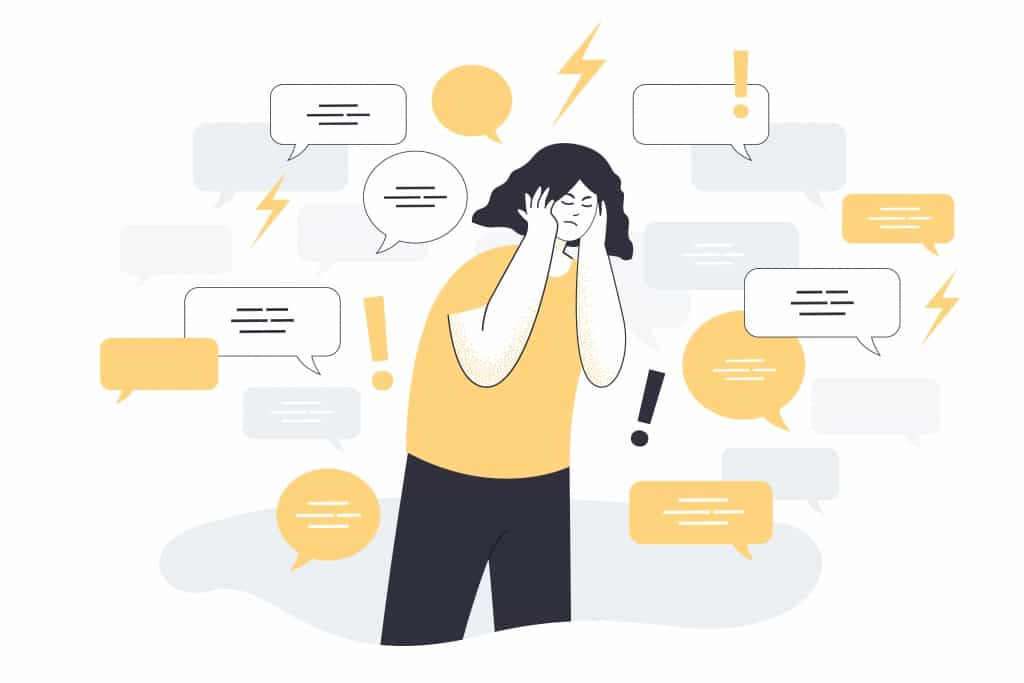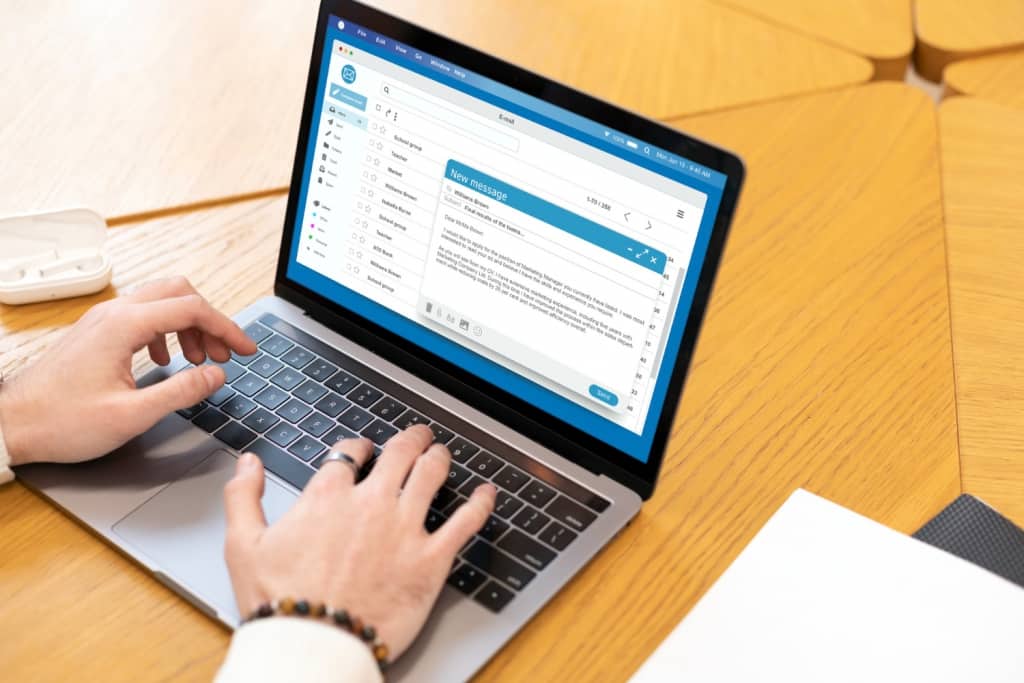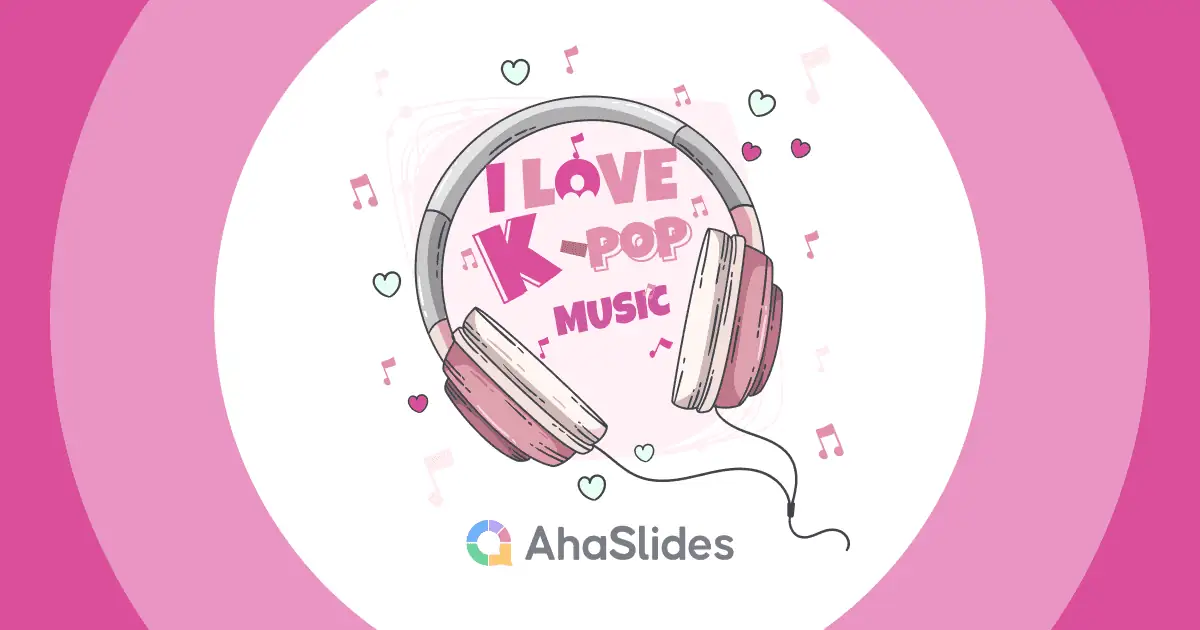हम सभी वहाँ रहे है। कोई पूछता है, “आप कैसे हैं?” और ऑटोपायलट एक सरल “अच्छा” या “ठीक है” कहकर चालू हो जाता है। हालाँकि ये जवाब विनम्र होते हैं, लेकिन अक्सर ये हमारी सच्ची भावनाओं को छिपा देते हैं। जीवन चुनौतीपूर्ण हो सकता है, और कभी-कभी, एक “अच्छा” दिन बिल्कुल भयानक लग सकता है। क्या होगा अगर हम इस सवाल को वास्तविक जुड़ाव के अवसर के रूप में लेना शुरू कर दें?pen_spark
इस पोस्ट में, हम आपके मानक उत्तर को बदल देंगे और खुद को व्यक्त करने के 70+ तरीके तलाशेंगे आप कैसे जवाब दे रहे हैं विशिष्ट स्थितियों में। कौन जानता है? आप अपनी बातचीत में एक नए स्तर के कनेक्शन की खोज कर सकते हैं।
विषय - सूची
- कैजुअल सिचुएशन में आप कैसे जवाब दे रहे हैं
- आप औपचारिक स्थितियों में कैसे उत्तर दे रहे हैं
- कठिन समय होने पर आप कैसे उत्तर दे रहे हैं
- जब आप कृतज्ञ महसूस कर रहे हों तो आप कैसे उत्तर दे रहे हैं
- आप औपचारिक ईमेल के लिए कैसे उत्तर दे रहे हैं
- अक्सर पूछे जाने वाले प्रश्न

बेहतर जुड़ाव के लिए टिप्स
- लाइव क्यू एंड ए आपकी प्रस्तुति को सशक्त बनाने का उपकरण
- प्रश्न कैसे पूछें
- किसी से कैसे पूछें कि क्या वे ठीक हैं

आपके आइसब्रेकर सत्र में अधिक मज़ा।
बोरिंग ओरिएंटेशन के बजाय, चलिए अपने दोस्तों के साथ जुड़ने के लिए एक मजेदार क्विज़ शुरू करते हैं। AhaSlides टेम्प्लेट लाइब्रेरी से मुफ़्त क्विज़ लेने के लिए साइन अप करें!
🚀 फ्री क्विज ☁️ लें
कैजुअल सिचुएशन में आप कैसे जवाब दे रहे हैं
अनौपचारिक परिस्थितियों में, आपको लंबा जवाब देने की ज़रूरत नहीं है। लेकिन सवाल पूछने वाले व्यक्ति के साथ आपके रिश्ते के आधार पर, आप अपनी प्रतिक्रिया को समायोजित करना चाह सकते हैं। उदाहरण के लिए, आप किसी अनौपचारिक परिचित की तुलना में किसी करीबी दोस्त के साथ ज़्यादा खुले हो सकते हैं।
इसके अलावा, सवाल का जवाब देना और दूसरे व्यक्ति से पूछना कि वह कैसा है, यह विनम्र है। यह दर्शाता है कि आप उनकी परवाह करते हैं और एक अधिक संतुलित बातचीत बनाता है।
यहां कुछ उदाहरण दिए गए हैं कि आप आकस्मिक परिस्थितियों में कैसे उत्तर देते हैं:
- मैं अच्छा हूँ, धन्यवाद!
- ख़राब नहीं, आपके क्या हालचाल हैं?
- मैं ठीक हूं, आप कैसे हैं?
- शिकायत नहीं कर सकते, आपका दिन कैसा चल रहा है?
- बहुत अच्छा, पूछने के लिए धन्यवाद!
- बहुत जर्जर नहीं, आप कैसे हैं?
- अच्छा चल रहा है। जिंदगी आपके साथ कैसा व्यवहार कर रही है?
- मैं अच्छा हूँ। जाँच करने के लिए धन्यवाद!
- मैं वहीं रुका हुआ हूं। आप क्या कहते हैं?
- मैं बिलकुल ठीक हूं। आपका सप्ताह कैसा रहा?
- मेरा बहुत बढ़िया चल रहा है, तुम्हारा क्या हाल है?
- शिकायत करने के लिए बहुत ज्यादा नहीं। आप कैसे हैं?
- मैं बहुत अच्छा महसूस कर रहा हूं, पूछने के लिए धन्यवाद!
- आप अच्छा कर रहे हैं, आप कैसे हैं?
- मैं अच्छा हूँ। आपका दिन कैसा चल रहा है?
- मैं ठीक हूं, आप कैसे हैं?
- सब कुछ ठीक है। आपका क्या हाल है?
- शिकायत नहीं कर सकता, आपके साथ सब कुछ कैसा है?
- बहुत अच्छा आप कैसे है?
- बुरा नहीं है। आपका दिन कैसा चल रहा है?
- मैं ठीक हूं आप कैसे हो?
- चीजें अच्छी हैं, आप कैसे हैं?
- मैं बिलकुल ठीक हूँ। पूछने के लिए धन्यवाद!
- मेरा काम पर व्यस्त दिन था, लेकिन मैं संतुष्ट महसूस कर रहा हूं।
आप औपचारिक स्थितियों में कैसे उत्तर दे रहे हैं

औपचारिक स्थितियों में, आपको औपचारिक भाषा का उपयोग करना चाहिए और सम्मानजनक लहजे और पेशेवर व्यवहार को बनाए रखने के लिए गाली-गलौज या बोलचाल से बचना चाहिए।
भले ही आपका दिन खराब चल रहा हो, अपने काम या परिस्थिति के सकारात्मक पहलुओं पर ध्यान केंद्रित करने की कोशिश करें। और जिस व्यक्ति या संगठन से आप बातचीत कर रहे हैं, उसके प्रति आभार व्यक्त करना न भूलें।
यहां कुछ उदाहरण दिए गए हैं
आप औपचारिक स्थितियों में कैसे उत्तर दे रहे हैं:- मैं ठीक हूं, जांच के लिए धन्यवाद। मैं आज आपकी कैसे सहायता कर सकता हूं?
- मुझ पर जाँच करने के लिए धन्यवाद। मैं आपकी सहायता कैसे कर सकता हूँ?
- मैं ठीक हूँ, पूछने के लिए धन्यवाद। अब तक का दिन बहुत उत्पादक रहा है।
- मैं बहुत खुश हूँ। पूछताछ के लिए धन्यवाद। मैं आपके विवरण पर ध्यान देने की सराहना करता हूँ।
- मैं ठीक हूँ, पूछने के लिए धन्यवाद। मैं आज की हमारी मुलाकात का इंतज़ार कर रहा हूँ।
- मैं ठीक हूँ, धन्यवाद। आज यहाँ आकर मुझे बहुत खुशी हुई।
- आपकी पूछताछ के लिए धन्यवाद। मैं ठीक हूँ। आपकी टीम के साथ सहयोग करना सम्मान की बात है।
- मैं अच्छा महसूस कर रहा हूँ, पूछने के लिए धन्यवाद। मैं आज यहाँ आने के अवसर की सराहना करता हूँ।”
- मैं ठीक हूँ। जाँच करने के लिए धन्यवाद। आज का दिन बहुत व्यस्त है, लेकिन मैं काम चला रहा हूँ।
- मैं ठीक हूँ, पूछने के लिए धन्यवाद। मैं आपके साथ इस परियोजना पर आगे चर्चा करने के लिए उत्साहित हूँ।
- मैं ठीक हूं, धन्यवाद। मैं आज आपसे बात करने का अवसर पाकर बहुत खुश हूं।
- मैं ठीक हूँ। पूछताछ के लिए धन्यवाद। मैं इस परियोजना पर काम करने का मौका पाकर आभारी हूँ।
- मैं ठीक हूँ, आपकी रुचि के लिए धन्यवाद। मुझे विश्वास है कि हम कोई समाधान निकाल लेंगे।
- मैं ठीक हूं, और मैं आपके संपर्क में रहने की सराहना करता हूं। मुझे आपके उद्देश्यों के बारे में और अधिक जानने में रुचि है।
- मैं अच्छा महसूस कर रहा हूँ, पूछने के लिए धन्यवाद। मैं आपके साथ विवरण की समीक्षा करने के लिए उत्सुक हूँ।
- मैं अच्छा महसूस कर रहा हूँ, पूछताछ के लिए धन्यवाद। मैं अब तक की हमारी प्रगति के बारे में आशावादी हूँ।
- मैं ठीक हूँ, और मैं आपकी देखभाल की सराहना करता हूँ। मैं परियोजना के विवरण पर काम शुरू करने के लिए उत्सुक हूँ।
- मैं अच्छा महसूस कर रहा हूँ, पूछने के लिए धन्यवाद। मैं उच्च गुणवत्ता वाली सेवा प्रदान करने के लिए प्रतिबद्ध हूँ।
कठिन समय होने पर आप कैसे उत्तर दे रहे हैं

यह स्वीकार करना ठीक है कि आप मुश्किल समय से गुज़र रहे हैं और अपनी भावनाओं के बारे में ईमानदार रहें। आपको हर उस चीज़ के बारे में विस्तार से बताने की ज़रूरत नहीं है जो गलत हो रही है। इसके बजाय, अपनी प्रतिक्रिया संक्षिप्त और मुद्दे पर रखें।
इसके अलावा, मदद या समर्थन मांगने से न डरें। दूसरों को यह बताना कि आप संघर्ष कर रहे हैं, आपको अकेलेपन से राहत दिलाने में मदद कर सकता है।
यहाँ कुछ उदाहरण दिए गए हैं जिनकी आपको आवश्यकता हो सकती है:
- मैं इस समय बहुत अच्छा महसूस नहीं कर रहा हूँ। लेकिन मैं आपकी चिंता की सराहना करता हूँ।
- मैं इस समय मुश्किल दौर से गुज़र रहा हूँ। लेकिन मैं इससे निपटने की पूरी कोशिश कर रहा हूँ।
- मैं मुश्किल समय से गुज़र रहा हूँ। लेकिन मुझे पता है कि यह अंततः बेहतर हो जाएगा।
- मैं कठिन दौर से गुजर रहा हूं, लेकिन मैं आगे बढ़ने की पूरी कोशिश कर रहा हूं।
- सच कहूं तो मैं संघर्ष कर रहा हूं। आप क्या सोचते हैं?
- यह एक चुनौतीपूर्ण दिन रहा है, लेकिन मैं सकारात्मक चीजों पर ध्यान केंद्रित करने की कोशिश कर रहा हूं।
- आज मेरी हालत बहुत अच्छी नहीं है, लेकिन मैं मजबूत बने रहने की कोशिश कर रहा हूं।
- आज मैं कठिन समय से गुजर रहा हूं, लेकिन मैं जानता हूं कि इसमें मैं अकेला नहीं हूं।
- आज का दिन चुनौतीपूर्ण रहा है, लेकिन मैं सचेत और वर्तमान में बने रहने का प्रयास कर रहा हूं।
- सच कहूं तो, मैं इस समय बहुत संघर्ष कर रहा हूं।
- यह कठिन समय रहा है, लेकिन मैं आशावान बने रहने की कोशिश कर रहा हूं।
- मैं बहुत अच्छा तो नहीं कर रहा हूं, लेकिन मैं अपने मित्रों और परिवार के सहयोग के लिए आभारी हूं।
- सच कहूं तो आज का दिन बहुत भारी रहा।
- मैं कठिन समय से गुजर रहा हूं, लेकिन मैं मजबूत बने रहने की पूरी कोशिश कर रहा हूं।
जब आप कृतज्ञ महसूस कर रहे हों तो आप कैसे उत्तर दे रहे हैं
नियमित रूप से आभार व्यक्त करने की आदत डालें, न कि केवल तब जब कोई आपसे पूछे कि आप कैसे हैं। इससे आपको समग्र रूप से अधिक सकारात्मक मानसिकता विकसित करने में मदद मिलेगी।
यहां कुछ उदाहरण दिए गए हैं
आभारी महसूस करते समय आप कैसे उत्तर दे रहे हैं:- मैं बहुत अच्छा महसूस कर रहा हूं, अपने स्वास्थ्य और अपने परिवार के प्रति आभारी हूं।
- मैं ठीक हूँ, पूछने के लिए धन्यवाद। आज मैं बहुत भाग्यशाली और आभारी महसूस कर रहा हूँ।
- मैं अच्छा महसूस कर रहा हूं, अपनी नौकरी, अपने घर और अपने प्रियजनों के प्रति आभारी महसूस कर रहा हूं।
- मैं अच्छा महसूस कर रहा हूँ, मैंने जो सबक सीखा है उसके प्रति तथा अपने जीवन में आए लोगों के प्रति आभारी महसूस कर रहा हूँ।
- मैं उन सभी अनुभवों के लिए धन्य महसूस कर रहा हूं जिन्होंने मुझे आकार दिया है।
- मैं खुशी के उन छोटे-छोटे क्षणों के लिए आभारी महसूस कर रहा हूं जो जीवन को विशेष बनाते हैं।
- मैं अच्छा महसूस कर रहा हूं और अपने आसपास की प्रकृति की सुंदरता के प्रति आभारी महसूस कर रहा हूं।
- मैं अपने जीवन में उन लोगों के प्रति आभारी हूं जो हर दिन को उज्जवल बनाते हैं।
- मैं बहुत अच्छा महसूस कर रहा हूँ, अजनबियों की दयालुता और परिवार के प्यार के लिए आभारी हूँ।
- मैं बहुत अच्छा कर रहा हूँ, दूसरों की मदद करने की क्षमता के लिए आभारी महसूस कर रहा हूँ।
- मैं जीवन में मिलने वाली उन छोटी-छोटी खुशियों के लिए आभारी हूँ जो मुझे खुशी देती हैं।
- मैं बहुत अच्छा महसूस कर रहा हूं, मैंने जो यादें बनाई हैं और आगे आने वाले रोमांचों की सराहना करता हूं।
आप औपचारिक ईमेल के लिए कैसे उत्तर दे रहे हैं

याद रखें कि आप औपचारिक रूप से संवाद करते हैं, इसलिए आपका उत्तर उचित और पेशेवर होना चाहिए।
इसके अलावा, आपको यह सुनिश्चित करना चाहिए कि आप अपनी प्रतिक्रिया में विनम्र भाषा, उचित व्याकरण और विराम चिह्न का उपयोग करें। यह एक पेशेवर स्वर व्यक्त करने और गलतफहमियों से बचने में मदद करेगा। प्रश्न का उत्तर देने के बाद, प्राप्तकर्ता से यह पूछकर रुचि दिखाएं कि वे कैसे कर रहे हैं या यदि ऐसा कुछ है जिसमें आप उनकी सहायता कर सकते हैं।
यहां कुछ उदाहरण दिए गए हैं
आप औपचारिक ईमेल के लिए कैसे उत्तर दे रहे हैं:- मैं ठीक हूँ। आपकी दयालु पूछताछ के लिए धन्यवाद। आपसे फिर से सुनकर बहुत अच्छा लगा।
- मैं आपकी चिंता की सराहना करता हूँ। मैं ठीक हूँ और उम्मीद करता हूँ कि आप भी ठीक होंगे।
- चेक इन करने के लिए धन्यवाद। मैं अच्छा हूँ, और मुझे उम्मीद है कि आप भी अच्छे होंगे। मैं आपकी और कैसे सहायता कर सकता हूँ?
- मैं ठीक हूँ, पूछने के लिए धन्यवाद। मुझे उम्मीद है कि आप भी ठीक होंगे। मैं आपकी क्या सेवा कर सकता हूँ?
- मैं आपकी पूछताछ की सराहना करता हूँ। मैं ठीक हूँ, धन्यवाद। अगर आपको किसी और चीज़ की ज़रूरत हो तो कृपया मुझे बताएँ।
- "आपके ईमेल के लिए धन्यवाद। मैं अच्छा महसूस कर रहा हूँ, और मुझे उम्मीद है कि यह संदेश आपको अच्छे स्वास्थ्य में मिलेगा।
- मैं अच्छा महसूस कर रहा हूँ, पूछने के लिए धन्यवाद। मुझे उम्मीद है कि आपका सप्ताह अब तक सुचारू रूप से चल रहा है।
- मैं आपकी विचारशीलता की सराहना करता हूँ। मैं अच्छा हूँ, धन्यवाद। मैं आपकी किस प्रकार सहायता कर सकता हूँ?
चाबी छीन लेना
चाहे आप किसी अनौपचारिक चैट में उत्तर दे रहे हों या औपचारिक ईमेल में, आपको अपने उत्तर को विशिष्ट संदर्भ के अनुसार ढालना चाहिए और अपने आप को प्रामाणिक रूप से व्यक्त करना चाहिए। इसलिए, उम्मीद है कि ऊपर दिए गए 70+ विशिष्ट स्थितियों में आप कैसे उत्तर दे रहे हैं, इससे आपको दूसरों के साथ गहरे स्तर पर जुड़ने में मदद मिलेगी।
और यह मत भूलना अहास्लाइड्स अपने दर्शकों को शामिल करने और वे कैसे कर रहे हैं, इस पर प्रतिक्रिया एकत्र करने का एक अभिनव तरीका प्रदान करता है। साथ हमारे टेम्पलेट्स, आप आसानी से बना सकते हैं इंटरैक्टिव चुनाव और क्यू एंड ए जो आपके दर्शकों को वास्तविक समय में अपने विचारों और भावनाओं को साझा करने की अनुमति देता है। तो क्यों न हमें एक कोशिश दें और अपनी प्रस्तुतियों को अगले स्तर पर ले जाएं?
अक्सर पूछे जाने वाले प्रश्न
लोग 'आप कैसे हैं?' क्यों पूछते हैं?
लोग अक्सर पूछते हैं: “आप कैसे हैं?” यह दिखाने के लिए कि वे आपकी परवाह करते हैं और आपकी भलाई में रुचि रखते हैं। यह विभिन्न संदर्भों में एक आम अभिवादन है, चाहे वह अनौपचारिक बातचीत हो या औपचारिक मीटिंग या ईमेल।
व्यावसायिक परिवेश में 'आप कैसे हैं?' के उत्तर में मैं क्या प्रतिक्रिया दूँ?
व्यावसायिक परिवेश में "आप कैसे हैं?" के उत्तर में आप इस प्रकार उत्तर दे सकते हैं:
- मैं बहुत खुश हूँ। पूछताछ के लिए धन्यवाद। मैं आपके विवरण पर ध्यान देने की सराहना करता हूँ।
- मैं ठीक हूं, पूछने के लिए धन्यवाद। मैं आज हमारी मुलाकात का इंतजार कर रहा हूं।
- मैं ठीक हूं, शुक्रिया। आज यहां आकर खुशी हुई।
- आपकी पूछताछ के लिए धन्यवाद। मैं ठीक हूँ। आपकी टीम के साथ सहयोग करना सम्मान की बात है।
- मैं अच्छा महसूस कर रहा हूँ, पूछने के लिए धन्यवाद। मैं आज यहाँ आने के अवसर की सराहना करता हूँ।”
कैसे बताएं कि आप कैसे हैं?
– सरलता और विनम्रता से पूछें “आप कैसे हैं?”
– “आप कैसे हैं?” पूछकर उनके समग्र स्वास्थ्य के बारे में पूछें।
– किसी विशिष्ट पहलू के बारे में पूछें जैसे “काम/स्कूल कैसा चल रहा है?”
- सहानुभूतिपूर्वक पूछें कि "आप तनावग्रस्त लग रहे हैं, आप कैसे हैं?"
- "हाल ही में जिंदगी आपके साथ कैसा व्यवहार कर रही है?" पूछकर माहौल को हल्का करें।








